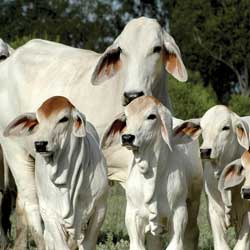About this series:
This series of caches is based upon the life and work of dairy farmers Mark & Pen DeLogg on the Lincolnshire Fens. As well clues to solving the puzzle on each cache page will be a fact about cows and their behaviour, as well as information about particular breeds of cattle around the British Isles and the world.
- The cache is not hidden at the published coordinates.
- Steep drops and water may be encounted at some GZs, keep the little ones safe.
- No animals were encountered when the caches were placed.
- The cache size was made as large as possible according to the hiding place, varying from magnetic nanos to regular size boxes
- You may need to provide your own TOTT i.e tweezers
- Please park sensibly, safely, and considerably.
- The D/T ratings concern the difficulty to both the puzzle and hides.
Other caches in this series:
#1 Holstein | #2 Limousin | #3 Guernsey | #4 Charolais | #5 Highland | #6 Galloway | #7 Dexter
#8 Belted Galloway | #9 Lincoln Red | #10 Jersey | #11 Shorthorn | #12 Hereford | #13 Gloucester
#14 Aberdeen Angus | #15 Belgian Blue | #16 White Park | #17 Blonde d'Aquitane | #18 South Devon
#19 Aryshire | #20 Brown Swiss | #21 Simmental | #22 Gelbvieh | #23 Fleckvieh | #24 Piedmontese
#25 Normande | #26 North Devon | #27 Sussex | #28 Welsh Black | #29 Luing | #30 Chillingham
#31 Irish Moiled | #32 English Longhorn | #33 Deoni | #34 Ankole Watusi | #35 Murray Grey
#36 Brahman | #37 Icelandic
Cow Fact:
Whilst the number of UK dairy cows has decreased, the yield per cow has increased by 93% since 1975. As a result, total domestic milk production has increased by 9% over the period.
 About Brahman Cattle:
About Brahman Cattle:
The Brahman or Brahma is a breed of Zebu cattle (Bos indicus) that was first bred in United States from cattle breeds imported from India. Brahma cattle were produced by cross-breeding the Kankrej, Ongole, and the Gir (or Gyr) breeds of cattle. The Brahman is one of the most popular breeds of cattle intended for meat processing and is widely used in Argentina, Brazil, Paraguay, United States, Colombia and Australia among many other places.
Brahman cattle are known for their extreme tolerance to heat and are widespread in tropical regions. They are resistant to insects due to their thick skin. Brahman cattle live longer than many other breeds, often producing calves at ages 15 and older.
In Oman and Fujairah, Brahman bulls are used in the traditional sport of bull-butting. It involves two of these bulls engaging in a ferocious round of headbutts. The first one to collapse or concede its ground is deemed the loser. Brahman bulls being readied for this sport are kept on a special diet of milk and honey for gaining superior strength.
 Now for the puzzle:
Now for the puzzle: 
The birth of a new calf was always special to Mark DeLogg. He had witnessed it lots of times and nothing fazed him any more. To see a young calf come into the world and be on its feet and suckling its mother within seven minutes is a wonderful thing.
Most of his cows usually manage to give birth (calve) themselves but a small number do need a helping hand. This may just involve careful observation, or sometimes with a gentle tug or two.
The most calving’s that Mark had in a day was eight, which was a pretty hectic day. This resulted in six live heifer calves, a bull calf, and a set of twins which, unfortunately died as they were a fortnight early and were presented in a breech position.
In the worst case scenarios, veterinary help may be required. Mark can remember the first time when the vet had to perform a caesarean section on a cow. It was one o’clock in the morning and Mark and Pen had just returned from the Hunt Ball nine miles away in Woodhall Spa.
Pen was in her long dress and Mark was dressed in his best suit. It took the vet six long hours to deliver a strong healthy heifer calf.
However, the calf went on to have seven healthy calves herself, of which four were female/heifers. This made the huge vet bill worthwhile.
 Check your Solution:
Check your Solution: 

Logging Etiquette: Geocache hiders sometimes go through a great deal of planning to place their caches. As a result, they'd like to hear your feedback on whether you liked or disliked any aspect of the hide, the journey or location, or if you feel that some cache maintenance is required. Single word, acronym, or "copy and paste" logs may be easier when you have a lot of caches to log, but it doesn't tell the hider or other finders anything about your adventure (or lack thereof) in finding the cache. Please keep this in mind when entering your log.
Travelbug Etiquette: Cachers pay good money for TravelBugs and Geocoins. Please if you take a TB or GC from a cache will you ensure it is correctly logged in and out, also If you take one that still shows somewhere else please be patient before “grabbing” the item, it does not get its mileage by being grabbed and the last person to place may not have had time to log a previous find or the one you took it from. This is particularly important on busy and new caches. If you have an issue with a bug please e-mail the owner through their profile and advise them of the issue. They will be pleased to hear from you.